Polar Zero – Ice Stories
Polar Zero – Ice Stories
Polar Zero forms a major part of British Antarctic Survey’s (BAS) multi-media engagement plan for COP 26. Ice Stories draws on personal anecdotes, memories and oral testimonies from the national and international scientists and experts whose lived experiences of the Arctic and Antarctic facilitate and enable their narrative futures to be written.
Artist Wayne Binitie gives this brief:
Phase Changes of Water
Exploring the freezing and melting, condensation and evaporation, sublimation and deposition states of polar water. Your words should challenge readers/listeners to imagine what it means to experience the phase changes in between. Each phase transition has its own atmospheric language and material identity.
Solid. In the phase transitions of water, freezing is when a substance changes from a liquid to a solid, and melting is when it changes back from solid to liquid.
Liquid . In the phase transitions of water condensation is the change from a vapour to a condensed state, which could be solid or liquid, and evaporation is the change of a liquid to a gas.
Gas. In the phase transitions of water subliming is when a substance passes from solid to gas without going through the liquid phase, while deposition is when a substance goes from gas to solid.

Wayne Binitie, Artist (Royal College of Art)
“About 5 or 6 years ago I formed a unique relationship with the BAS and Arup. Our collaboration involves artistic creativity, ice core science advanced engineering. It’s my hope that people who experience these works will gain a better understanding of humanity’s impact on the natural environment and its climate systems.”
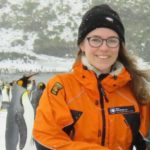 Dr Amy King, British Antarctic Survey
Dr Amy King, British Antarctic Survey
“We’d been waiting on board the ship for two days for this moment. The swirling, bubbling clouds finally begin to evaporate away, parting to reveal the ice-covered volcanic island hidden below. Surrounded by the vast, stormy waters of the Southern Ocean, lapping against the sheer ice–cliffs tumbling downwards and melting away. Bouvet Island. The most remote island in the world.”
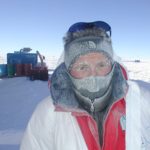 Professor Hubertus Fischer, University of Bern
Professor Hubertus Fischer, University of Bern
“Gletscher, Schnee und Eis sind Teil meiner DNA und definieren einen grossen Teilmeines privaten und wissenschaftlichen Lebens-sei es beim Abfahren mit Skiauf Schweizer Hängen, beim Besteigen von Gletschern mit Steigeisen oder beim Überqueren des grönländischen Eisschilds, um Eiskernproben zu nehmen. Die schiere Grösse und Schönheitdieser majestätischen Eismassen nimmt mir jedes Mal den Atem. Zubeobachten, wie sie mit alarmierender Geschwindigkeit wegschmelzen-wobei Grönland durch den Klimawandel pro Jahr mehr Eis verliertals in allen Schweizer Gletschern zusammen gespeichertist-verschlägt mir genauso den Atem und lässt mich hilfloszurück.”
Glaciers, snow and ice are in my DNA and define a large of part of my private and scientific life –be it skiing down Swiss mountain slopes, climbing up glaciers on crampons, or crossing the Greenland icesheet to extract ice core samples. The sheer size and beauty of these majestic ice masses always take my breath away. Seeing them dwindle at an alarming rate –with Greenland losing more ice to climate warming each year than is stored in all the Swiss glaciers together –leaves me equally breathless but also immensely helpless.
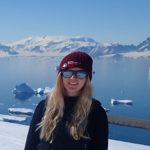 Dr Isobel Rowell, University of Cambridge/British Antarctic Survey
Dr Isobel Rowell, University of Cambridge/British Antarctic Survey
“The grain of ice that tells us about a past much bigger than herself, has her own internal history.
She was once a snowflake, falling through frozen air.
Before that, a droplet among countless billions of others, condensed inside a cloud.
And before even that, she was a whisper from the ocean’s surface, evaporated into gas and starting her long journey toward entrapment at the pole.
No matter the phase, she is quietly, impartially and quite accidentally recording her experience, waiting to reveal her secrets to the future.”
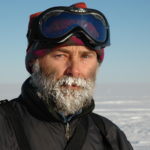 Dr Robert Mulvaney, British Antarctic Survey
Dr Robert Mulvaney, British Antarctic Survey
“I stand here on the remote Antarctic ice sheet, a splinter of freshly drilled ice core in my just warm hand. As it melts away I hear the crackle and popping as bubbles of ancient air are released from their icy trap. I was born into a world with 315 molecules of carbon dioxide in every million molecules of air. Today I know that number is over 415, and I fear that no one alive now will ever see it fall back below 400. And I fear the consequence this will have on the climate of our planet.”
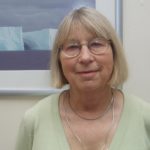 Professor Liz Morris, Scott Polar Research Institute
Professor Liz Morris, Scott Polar Research Institute
“Ice crystals fall glittering from a cloudless blue sky. This is ‘diamond dust ‘ and today will be a ‘diamond day’.“
 Professor Ted Scambos, University of Colorado Boulder
Professor Ted Scambos, University of Colorado Boulder
Fazed
Ice turns to water everywhere
Wood turns to gas and haze
Is Earth really getting warmer?
Or just going through a phase?
– – – – – – – –
Nansen’s Lament
When last I looked upon this place
Of gleaming frozen ocean
Its vast white surface lit the sky;
Its waves frozen in motion.
But now the seascape roils and bucks
Its brooding darkness flows
It beats against the distant shore
Eroding beach and homes
The story repeats across the world
Ice withering in the sun
And water flowing sullenly out
Its changeling work now done.

Linda Capper, British Antarctic Survey
“I’m abseiling deep into a crevasse inside an Antarctic glacier. I’m on survival training. Surrounded by smooth icy walls and gigantic glassy icicles everything is deep azure blue – it’s scary but beautiful. At first the only sound is the jingling of my climbing kit and safety harness. The surface is shut off in this frozen den. Then, a distant rumble makes me jump. Somewhere the glacier is on the move. Icicles drip– our breaths and body heat are warming the air. In the future this glacier will melt, exposing the rock beneath. Perhaps the water will generate new life.”
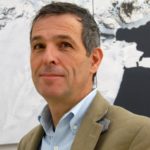
Professor Carlo Barbante, Institute of Polar Sciences, National Research Council of Italy
“Sforzi immensi, giorni e notti senza fine e sotto ai miei piedi più di due chilometri e mezzo di ghiaccio, un libro immenso che apre le sue pagine per ammonirci e ricordarci che quello che stiamo facendo al nostro Pianeta non ha precedenti nella storia recente della Terra. Guardando il ghiaccio sto pensando che nel nostro futuro c’è molto del nostro passato. Possano i potenti della Terra ascoltare la nostra voce di scienziati.”
Immense efforts, endless days and nights and under my feet more than two and a half kilometres of ice, an immense book that opens its pages to warn and remind us that what we are doing to our planet is unprecedented in the recent history of the Earth. Looking the ice I’m thinking that in our future there is a lot of our past. May the powerful of the world hear our voice of scientists.
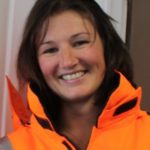 Dr Liz Thomas, British Antarctic Survey
Dr Liz Thomas, British Antarctic Survey
“Nothing comes close to the feeling of sleeping on ice. Wrapped up warm in your tent with 1000 meters of solid ice beneath you. From a distance, the surface looks smooth and unchanging, but up close it’s a myriad of peaks and troughs, dunes of ice formed by the relentless winds.
Sometimes the ice is slow and stable. Sometimes its moving with ever increasing speed towards to ocean. And sometimes its sitting on top of an active volcano, on the world’s most remote island, beneath your feet nothing but a wedge of ice and the abyss of the volcanoes crater.”
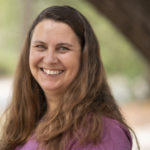
Professor Nerilie Abram, Australian National University
“Ice tells stories. The surface of the ice cap sparkles in the sunlight like a carpet of jewels. A warm wind is blowing in from the ocean today and moves the snow crystals into ripples and dunes like sand. I descend into the ice cave we carved out to store our precious ice core samples. In the wall of the ice cave there are clearblue layers of melt water that has refrozen into a permanent marker of summer warmth. They tell the story of our impact on the farthest reaches of the planet.”
Dr Jack Humby, British Antarctic Survey
Snap… Ancient ice hits hot metal.
Crackle… Freed liquid boisterously erupts from its suspended animation.
Pop… Gases imprisoned for millennia surge to their freedom.
Physical ice metamorphosises to digital data. Hidden secrets of Earth’s history reveal themselves.
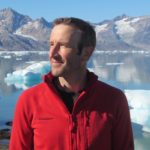 Dr Robert Macfarlane, University of Cambridge
Dr Robert Macfarlane, University of Cambridge
“Ice has a memory. It remembers in detail and it remembers for a million years or more. It remembers forest fires and rising seas. It remembers the explosions of volcanoes and the smelting boom of the Romans. Yes, ice has a memory, and the colour of that memory is blue –– the blue of time. The blue of time is glimpsed in the depths of crevasses. The blue of time is glimpsed at the calving faces of glaciers. Yes, ice has a memory, and it both remembers and tells –– tells us that we live on a fickle planet, capable of swift shifts and rapid reversals.”
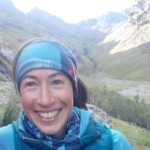 Dr Anna Crawford, University of St Andrews
Dr Anna Crawford, University of St Andrews
Edge shift
The iceberg’s surface is endlessly stretching to the horizon.
Yet I know there is an endpoint, a periphery.
And that it is fracturing. Melting. Contracting inwards.
The ebbing edges of icebergs. Ice sheets. Coastlines.
The constriction of our peripheries is imperceivable to the senses.
Yet, we know.
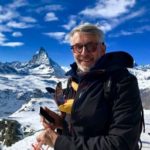 Professor Massimo Frezzotti, Roma Tre University
Professor Massimo Frezzotti, Roma Tre University
“Sono partito per la prima volta per l’Antartide nel 1985 che ero un giovane ricercatore appassionato di montagna, è stata un’esperienza che mi ha cambiato la vita. L’isolamento fisico e mentale in questo ambiente estremo aumenta la sensibilità verso l’ambiente e i compagni di avventura. I ghiacci delle montagne su cui arrampicavo stanno scomparendo e non potranno essere usufruiti dai nostri figli, nipoti e pronipoti. Il cambiamento climatico è in atto e siamo noi i responsabili dell’alterazione dell’ambiente. Prima ci fermiamo e più salvaguardiamo il pianeta per le prossime generazioni.”
I left for the first time to Antarctica in 1985 as a young researcher with a passion for the mountains, it was an experience that has changed my life. Physical and mental isolation in this extreme environment increases sensitivity towards the environment and fellow adventurers. The ice of the mountains on which I climbed are disappearing and cannot benefit our children, grandchildren, and great-grandchildren. Climate change is taking place and we are responsible for the alteration of the environment. The sooner we stop, the more we safeguard the planet for the next generations.
